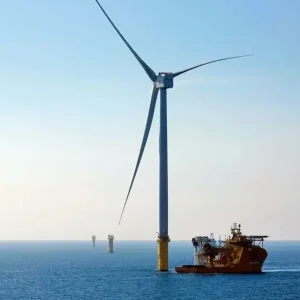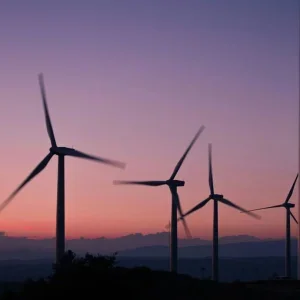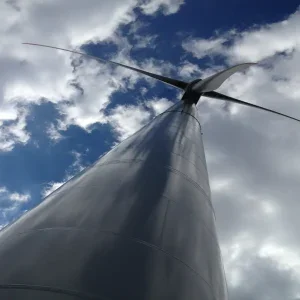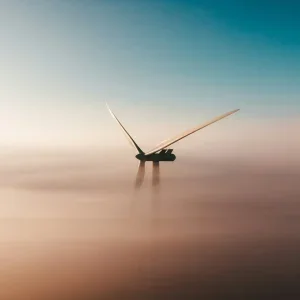The US wind energy industry achieved its best year ever in 2012, shattering numerous records. It installed 13,131MW of wind power capacity and surged past the 60GW milestone for total capacity installed. Last year, the industry invested over $25 billion in private capital to build new wind projects in the US, pushing the five-year average annual investment level to $18 billion between 2008 and 2012.
The result is that, for the first year ever, wind energy was the top source of new electricity-generating capacity, contributing 42% of all the megawatts installed by the power sector. More than 180 wind projects were built.
It was also in 2012 that the US wind industry surpassed the 50GW benchmark – and it happened just five months earlier. But what does 10GW in just a few months mean? To put this in perspective, it took the industry 25 years to reach 10GW of total installed capacity; that came in 2006, when industry performance really took off. Just two years later, US wind power doubled in capacity, hitting 20GW, and then it took only one year apiece to reach the 30GW and 40GW milestones in 2009 and 2010, respectively.
The 60GW installed today represents enough electricity to power the equivalent of 15.2 million American homes. That’s equivalent to all the households in Colorado, Iowa, Maryland, Michigan, Nevada and Ohio combined. The 60GW of wind power now deployed will avoid nearly 100 million tons of carbon dioxide, which equates to more than 4% of all power sector CO2 emissions.
Iowa and South Dakota now produce more than 20% of their electricity from wind energy, while the Electric Reliability Council of Texas’s (ERCOT) operating system has reached 10% wind energy. Nine states now receive more than 10% of their electricity generation from wind energy.
The late-year surge was in-part driven by the then-pending expiration of the federal production tax credit (PTC) for wind energy, the industry’s primary policy driver in the US, which was set to expire at the end of the year. The PTC has always been extended in short-term increments so, while wind turbine component orders across the supply chain began to slow down in the second half of the year in anticipation of a possible expiration – even as developers completed projects at a record pace – the US Congress’s extension on 1 January 2013 for projects that start this year has sent the industry back to work.
A dynamic market
In addition to the industry’s record growth last year, a growing trend augured well for its future. New purchases of wind power were made by 74 electric utility companies, along with at least 18 major industrial consumers, as well as 11 schools and universities – all taking the chance to diversify their energy portfolio, and stabilise and lower energy costs, typically via long-term, fixed-rate contracts. Rising utility interest has been seen again this year since the PTC extension, with at least seven utilities issuing new requests for proposals to purchase over 1,000MW of wind power. Requests for proposals continue to be issued.
The bottom line is that wind energy is becoming ever more attractive and utilities, showing an understanding of this renewable resource, are eager to tap into its benefits, starting with affordability and price stability.
In Michigan, for instance, renewable energy contracts submitted to the state Public Service Commission show a downward trend. "Almost all actual renewable energy contract prices are lower than the coal guidepost rate," the Michigan Public Service Commission noted in a February 2012 report. Meanwhile, at the opposite end of the country – in the south, where electricity rates are generally known to be low – American Electric Power subsidiary Southwestern Electric Power Company signed power purchase agreements totalling 358.65MW of wind power from projects in Texas, Oklahoma and Kansas. The result: an average decrease in cost to the utility’s customers of 0.1¢/KWh over a ten-year period from 2013.
Thanks to continued technological improvement, the cost of wind keeps going down. Taller towers that reach stronger wind resources, along with longer blades that capture more energy, translate into a lower overall cost of wind-generated electricity. Hub heights now average more than 80m, with 1,071 turbines installed during 2012 on 100m towers. Moreover, with wind power, utilities can lock in the price they pay for electricity, protecting themselves against volatile fossil fuel prices.
Meanwhile, transmission, a much-needed wind energy enabler, is being built at a robust pace. The three new transmission lines completed in 2012 allow for 1,000 more megawatts of wind to be brought onto the system.
This year and next, the PTC should help create opportunities for wind power growth in almost every region of the country, while various regions will get additional boosts from such market drivers as renewable portfolio standards (New England, the mid-Atlantic, California and the Pacific north-west) and the build-out of new transmission (the upper mid-west and Texas). Driving project development activity in regions such as the territory of the Southwest Power Pool and the south-east, meanwhile, will be the overall level of load growth and increasingly competitive wind energy costs.
It should be noted that those drivers are expected to be tempered by limitations within the broader power market. Market dynamics for wind energy start with the overall power sector, where market size will be dictated (and limited) by power prices and energy demand. Playing important roles in the level of continued wind power capacity will be the nation’s rate of economic recovery, the resulting load growth and the price of natural gas.
Strong fundamentals going forward
One fundamental working in the industry’s favour is the fact that the cost of producing wind energy is continuing on a downward trajectory, driven by the kind of technological innovation for which the industry has come to be known. Wind energy is delivering affordable electricity, protecting consumers from price uncertainty and fuel price volatility.
In addition, the consumption of water by other forms of electricity generation cannot be ignored when assessing the market landscape. Wind energy uses virtually no water during generation – an extremely valuable attribute in these times of water shortages throughout the US. Better still, regions of the country with the best wind resources overlap to a great extent with areas most susceptible to drought.
Thanks to innovation and hard work, the industry is ahead of schedule when it comes to achieving its wind energy production milestones. It has been set the target of producing 20% of the US’s electricity by 2030, as outlined in the US Department of Energy’s landmark 2008 report showing the feasibility of reaching such a benchmark.
In light of market dynamics such as improved technology and the industry’s impressive performance, which have emerged since the publication of the report, it was announced at the American Wind Energy Association’s WINDPOWER 2013 Conference and Exhibition in May that an initiative is now under way to update the report.
Of course, given the industry’s history of surpassing all expectations, no doubt it will be difficult to envision how the industry can possibly better itself going forward.






